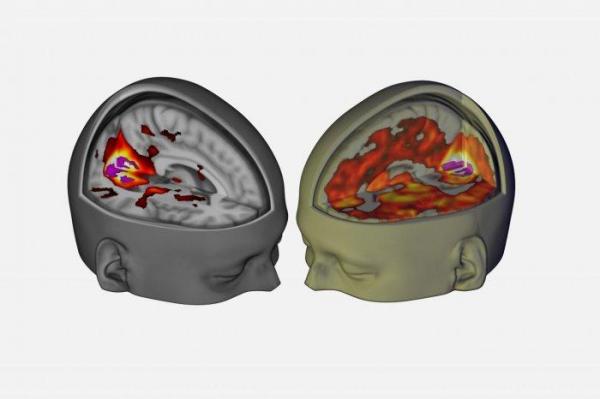
LONDON, April 12 — The visual, auditory and mental effects of lysergic acid diethylamide, or LSD, result from networks in the brain that usually work separately coming together, according to a recent study.
Researchers at Imperial College London found parts of the brain not normally involved with processing visual or auditory signals working together under the influence of LSD, as MRI scans revealed that far more areas of the brain are active in people who take the drug.
Although LSD is not legal in England, United Nations conventions and the English government allow research on the drug, though not for therapeutic uses, Dr. David Nutt, who led studies on the visual and aural effects of the drug, told Nature.
LSD is known among users to cause visual and auditory hallucinations, as well as reported feelings of openness, creativity, higher states of awareness and stronger emotion.
The researchers sought to understand how the drug works in the brain with the hope of eventually using it to treat psychiatric disorders, including depression. LSD has been illegal in the United States since 1966, however interest in research has picked up in recent years as small studies have been conducted.

“For the first time we can really see what’s happening in the brain during the psychedelic state, and can better understand why LSD had such a profound impact on self-awareness in users and on music and art,” Nutt, a professor at Imperial College London, said in a press release. “This could have great implications for psychiatry, and helping patients overcome conditions such as depression.”
For the study, researchers recruited 20 healthy volunteers who were already experienced with LSD, giving half an injection of 75 micrograms of LSD and the other half a placebo, before performing MRIs, magnetoencepholography, various supervised experiments and monitoring blood flow and electric activity in their brains. They published two studies based on the experiments.
The researchers reported changes to how the brain processes visual data, published in the Proceedings of the National Academy of Sciences, finding that where information from the eyes is normally processed in the visual cortex, participants given LSD showed other parts of the brain contributing to visual data. MRI scans of greater activity correlate with study participants’ reports of “complex, dreamlike visions.”
In another study, published in the journal European Neuropsychopharmacology, the researchers report the combination of LSD and music caused the parahippocampus, involved with mental imagery and memory, to communicate more with the visual cortex, causing more complex visions comprised of scenes of their lives.
“Normally our brain consists of independent networks that perform separate specialised functions, such as vision, movement and hearing — as well as more complex things like attention,” said Dr. Robin Carhart-Harris, from the Department of Medicine at Imperial, who led the research. “However, under LSD the separateness of these networks breaks down and instead you see a more integrated or unified brain.”
“Our brains become more constrained and compartmentalised as we develop from infancy into adulthood, and we may become more focused and rigid in our thinking as we mature,” Carhart-Harris added. “In many ways, the brain in the LSD state resembles the state our brains were in when we were infants: free and unconstrained.”
[Source:- UPI]



